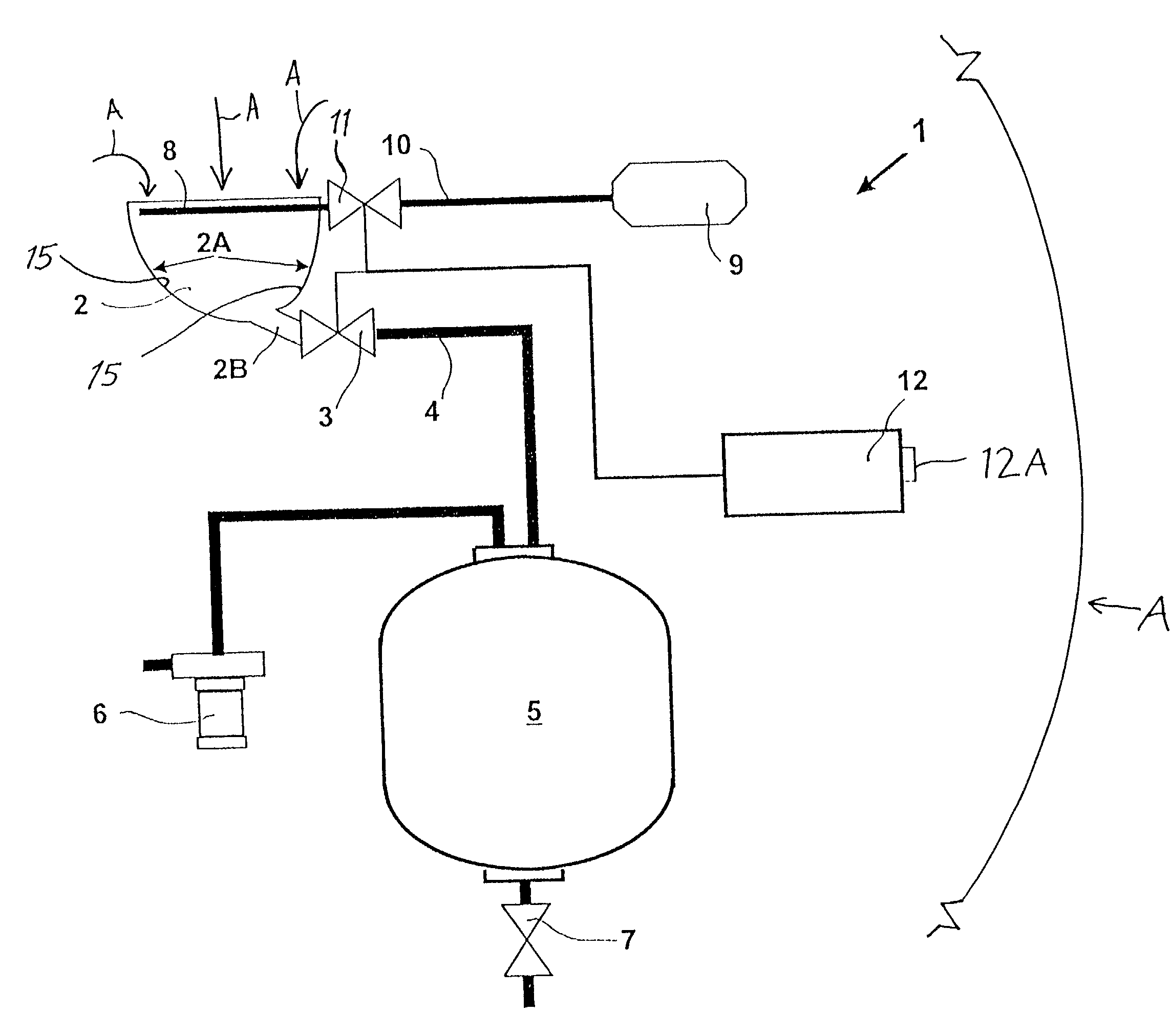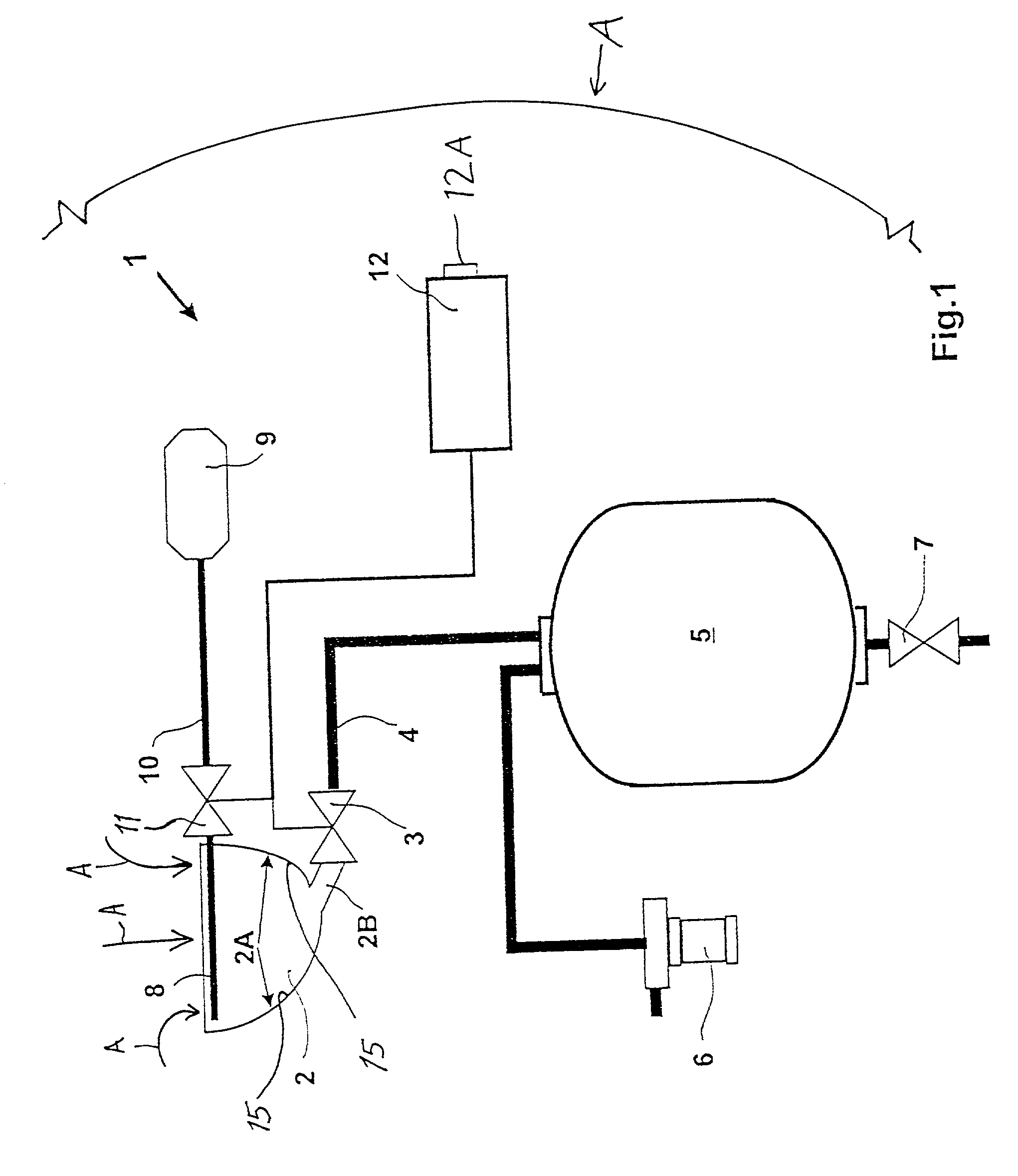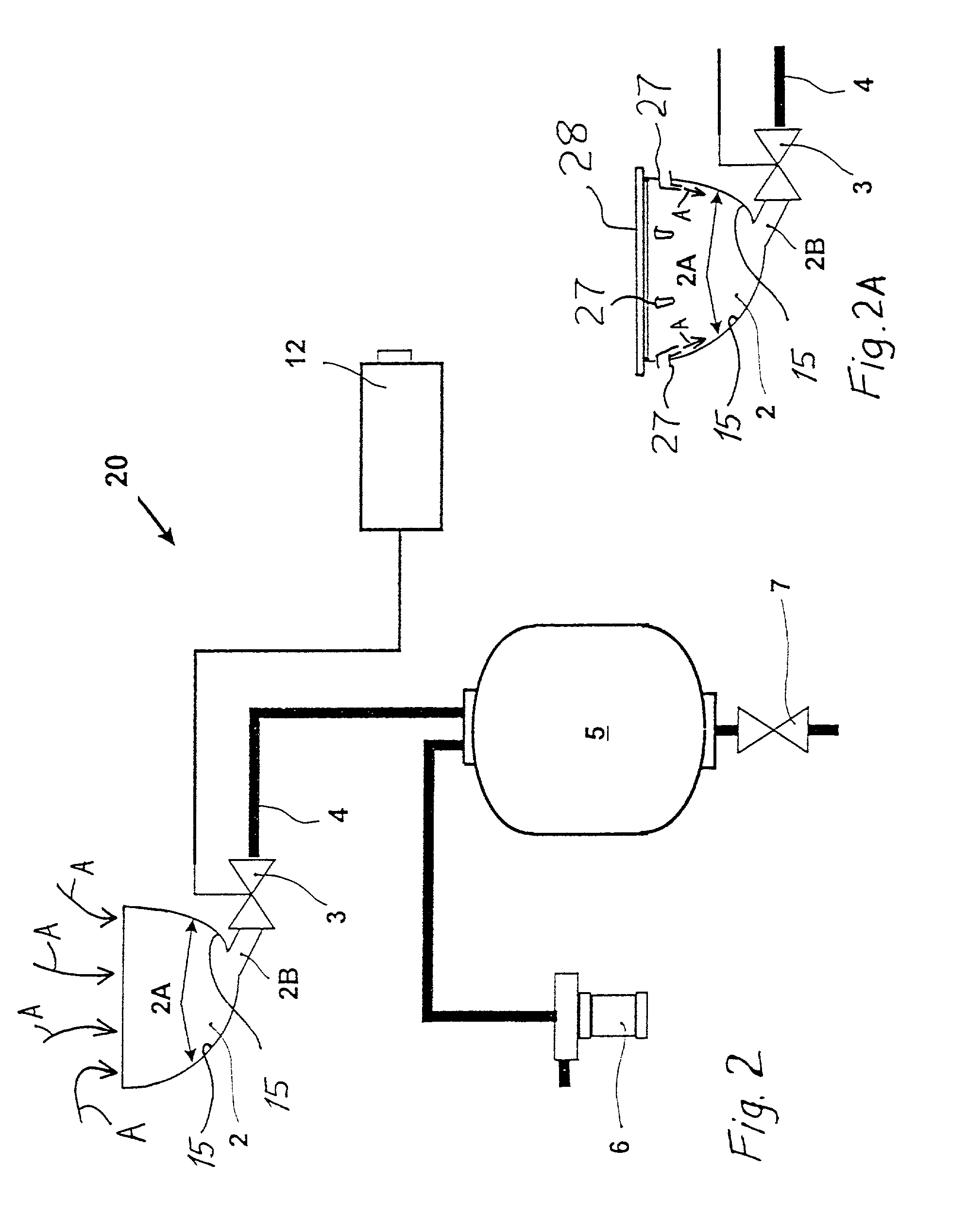Toilet system with reduced or eliminated flushing requirement, especially for transportation vehicles
a technology for toilets and toilets, which is applied in the direction of water closets, sewer systems, flushing devices, etc., can solve the problems of not having any waste-contacting surfaces, systems are not well suited to commercial passenger transportation vehicles, and only a limited capacity for flushing liquid
- Summary
- Abstract
- Description
- Claims
- Application Information
AI Technical Summary
Benefits of technology
Problems solved by technology
Method used
Image
Examples
Embodiment Construction
[0024] FIG. 1 is a schematic representation of a toilet system 1 such as can be used in an aircraft A. The toilet system 1 comprises essentially at least one toilet bowl 2 that is connected via a waste water valve 3 to a waste collection pipe 4. It is possible to connect a plurality of toilets located at various locations to the waste collection pipe 4. The waste collection pipe 4 includes pipes, conduits, hoses, or lines that are used to convey waste material. The waste collection pipe 4 leads to a waste collection tank 5 in which the waste material and waste water are collected. A pressure differential between the toilet bowl 2, which contains waste, and the waste collection tank 5 facilitates or effectuates the waste transport operation. The toilet system 1 is constructed therefor as a vacuum toilet system. A vacuum generator 6 generates the necessary negative pressure. When used in an aircraft, the vacuum toilet system 1 can also or alternatively take advantage of the predominat...
PUM
 Login to View More
Login to View More Abstract
Description
Claims
Application Information
 Login to View More
Login to View More - R&D
- Intellectual Property
- Life Sciences
- Materials
- Tech Scout
- Unparalleled Data Quality
- Higher Quality Content
- 60% Fewer Hallucinations
Browse by: Latest US Patents, China's latest patents, Technical Efficacy Thesaurus, Application Domain, Technology Topic, Popular Technical Reports.
© 2025 PatSnap. All rights reserved.Legal|Privacy policy|Modern Slavery Act Transparency Statement|Sitemap|About US| Contact US: help@patsnap.com



